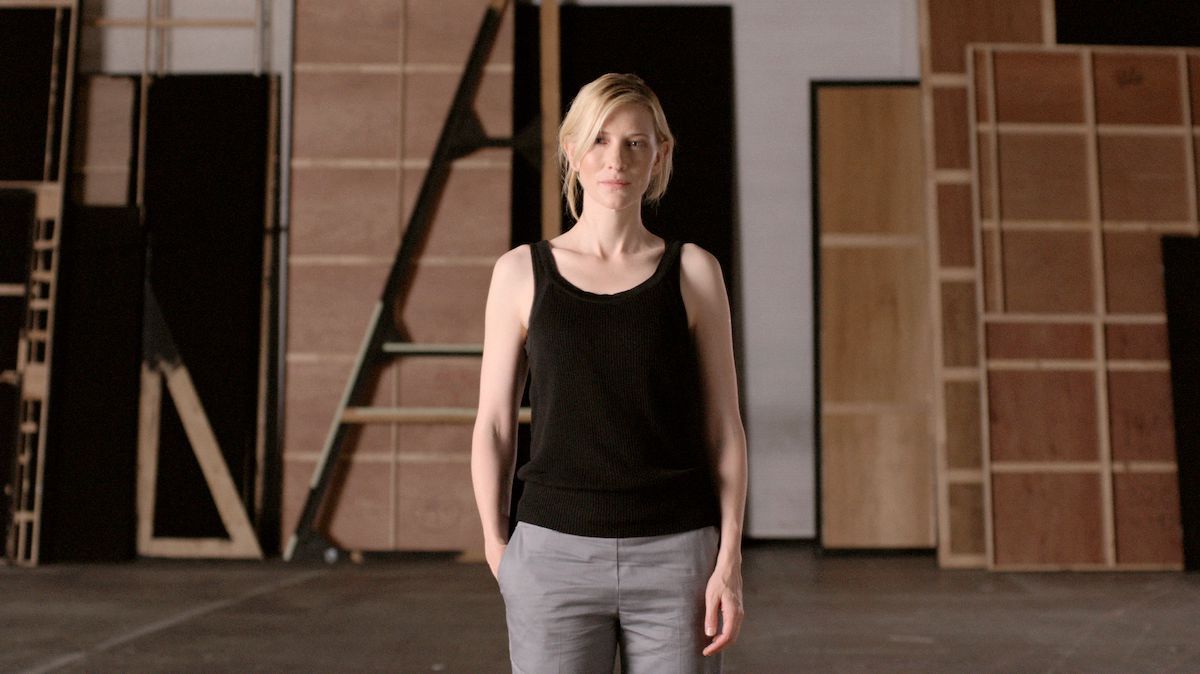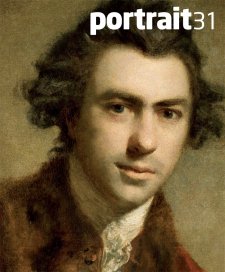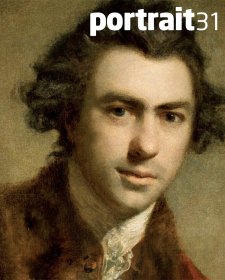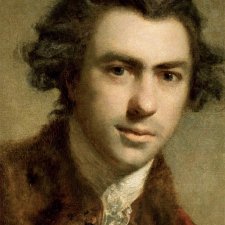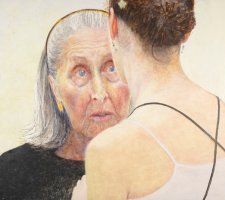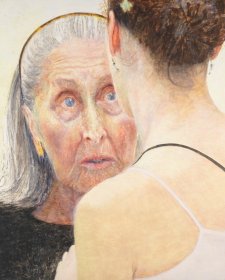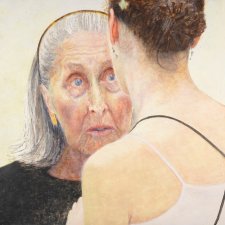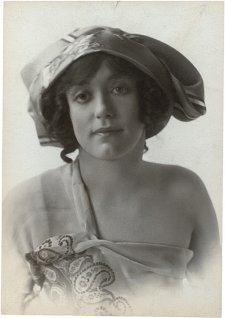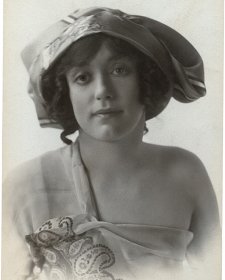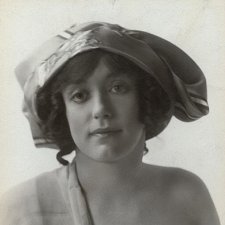The artist, David Rosetzky, explains: ‘I knew that I didn’t want to present the portrait as a definitive representation of Cate Blanchett – but rather an exploration of shifting identities and inter-changeability. The location of the Sydney Theatre Company workshop – where they make all of their sets – added to this idea as it represents a site of construction and potential.’ The still images reproduced here only hint at the experience of the work as a moving image with sound. The high-definition digital video has a soft, warm texture. The gently compelling work is poetic and beautiful.
Cate Blanchett (b. 1969) is regularly described as the finest actor of her generation. After graduating from the National Institute of Dramatic Art in 1992, Blanchett joined the Sydney Theatre Company and received the Sydney Theatre Critics’ Circle award for Best Newcomer. She has won many film industry awards including two AFI Awards, two BAFTA Awards, two Golden Globe Awards, an Academy Award, and for her performance as the young Bob Dylan in I’m Not There (2007) she won the Volpi Cup for Best Actress at the Venice Film Festival. Blanchett is a leading advocate for the arts in Australia, and was a co-chair of the Creative Australia panel at the government’s 2020 summit in April 2008. With her partner Andrew Upton, Blanchett is joint artistic director of the Sydney Theatre Company.
The National Portrait Gallery invited prominent contemporary artist David Rosetzky to create a video portrait of Blanchett, especially for the one of the Gallery’s Potter Project Spaces multimedia rooms. Rosetzky collaborated with choreographer Lucy Guerin and composer J David Franzke, and worked closely with Blanchett to produce the video portrait which runs for just under ten minutes. David Rosetzky (b. 1970) has worked across the media of photography, video and installation exploring themes of personal and social relations, identity and selfhood. He is known for the elegance and aesthetic rigour of his work, which often draws upon the visual languages of contemporary advertising and cinema.
In its conceptual rigour, Rosetzky’s moving-image portrait is in the tradition of recent international screen-based portraits that present their subjects in a surprising and sensitively-realised manner. In 2004 the National Portrait Gallery in London commissioned British artist Sam Taylor- Wood to create a video portrait of British footballer David Beckham. Taylor-Wood’s David, shot in a single take, is a close-up of the sportsman as he is sleeping after a training session in Madrid. The intimate portrait of Beckham presented a very different image to his sensational public persona. In 2006 Scottish artist Douglas Gordon and Algerian-born French artist Philippe Parreno created the 91-minute film Zidane – A 21st Century Portrait, with a soundtrack by Scottish band Mogwai. During a 2003 football match, French footballer Zinedine Zidane was monitored by seventeen cameras, the footage edited together to create an atmospheric and existential portrait.
Rosetzky’s video portrait depicts Cate Blanchett performing simple movements, gestures and a dance sequence choreographed by Lucy Guerin within a set that refers to the contexts of film and theatre. It is accompanied by a soundtrack designed by J David Franzke to compliment the tempo and mood of the visual imagery. The actor speaks in voiceover drawing upon descriptions of her own working methods, development processes and attitudes towards the various characters she has inhabited, focusing on her relationship to performance and transformation.
The portrait presents a gentle layering of voiceover, gesture, sound and visual composition, elements that artist David Rosetzky uses regularly in his work. ‘I feel fairly comfortable keeping quite an open attitude toward a work during the development process,’ Rosetzky says, ‘The script was the starting point I think.’ Rosetzky met with Blanchett and recorded an interview with the actor at her office at the Sydney Theatre Company. Rosetzky was interested in Blanchett’s relationship to the various roles she has played, in their performance and the transformation that this involved. Rosetzky says ‘I asked fairly general questions about that – such as “how do you see the roles that you play – what are they for you?” or “how do you prepare for a role?” and so on. Cate is extremely articulate and was very generous and open with her responses.’ From an hour of recorded material Rosetzky selected elements from the interview to create a structure for the work.
With sound designer and composer J David Franzke, Rosetzky developed a ‘mock up’ of the voiceover which assisted the development of the choreography. The interrelationship of the voiceover, sound composition, and choreography were explored in development sessions and fed back into the editing process. As Rosetzky explains ‘I could see how the text was working with the movement – this helped a lot with the editing process. Then I typed out the script for Cate to read out as the voiceover when we met again to do the filming.’
From an opening close-up of Cate Blanchett’s hands moving carefully through a series of gestures, the camera movements in the video portrait include gentle panning shots, and a sequence of lens changes where Balnchett’s face gently comes into focus. ‘The camera work,’ Rosetzky explains, ‘developed alongside the choreography and evolved out of conversations, site visits and tests with cinematographer Katie Milwright. An initial idea I had for an approach to the video portrait was a camera and lighting test – as Cate spoke about the importance of this process at the start of her career. So, we played with changing lenses with the camera running and incorporated this into the final piece.’ The camera movements and framing of each shot bear a subtle relationship to the voiceover, the choreography and the sound composition. ‘David Franzke’s sound composition mainly started once an initial edit of the visual material was done and responded to the pace of the movement and mood of the visual imagery – which was quite sombre and serious until the more playful dance sequence at the end’ Rosetzky says.
Portrait of Cate Blanchett is on display in the Ian Potter Gallery, in the National Portrait Gallery collection galleries.
